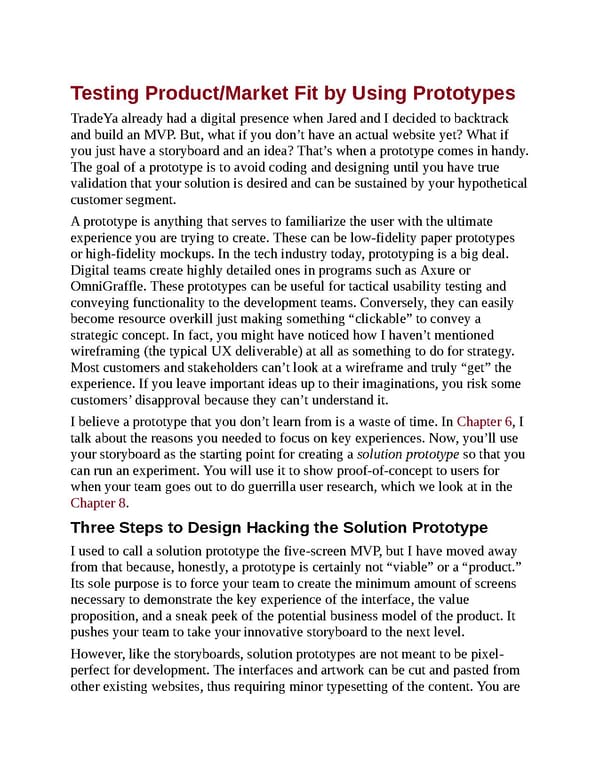Testing Product/Market Fit by Using Prototypes TradeYa already had a digital presence when Jared and I decided to backtrack and build an MVP. But, what if you don’t have an actual website yet? What if you just have a storyboard and an idea? That’s when a prototype comes in handy. The goal of a prototype is to avoid coding and designing until you have true validation that your solution is desired and can be sustained by your hypothetical customer segment. A prototype is anything that serves to familiarize the user with the ultimate experience you are trying to create. These can be low-fidelity paper prototypes or high-fidelity mockups. In the tech industry today, prototyping is a big deal. Digital teams create highly detailed ones in programs such as Axure or OmniGraffle. These prototypes can be useful for tactical usability testing and conveying functionality to the development teams. Conversely, they can easily become resource overkill just making something “clickable” to convey a strategic concept. In fact, you might have noticed how I haven’t mentioned wireframing (the typical UX deliverable) at all as something to do for strategy. Most customers and stakeholders can’t look at a wireframe and truly “get” the experience. If you leave important ideas up to their imaginations, you risk some customers’ disapproval because they can’t understand it. I believe a prototype that you don’t learn from is a waste of time. In Chapter 6, I talk about the reasons you needed to focus on key experiences. Now, you’ll use your storyboard as the starting point for creating a solution prototype so that you can run an experiment. You will use it to show proof-of-concept to users for when your team goes out to do guerrilla user research, which we look at in the Chapter 8. Three Steps to Design Hacking the Solution Prototype I used to call a solution prototype the five-screen MVP, but I have moved away from that because, honestly, a prototype is certainly not “viable” or a “product.” Its sole purpose is to force your team to create the minimum amount of screens necessary to demonstrate the key experience of the interface, the value proposition, and a sneak peek of the potential business model of the product. It pushes your team to take your innovative storyboard to the next level. However, like the storyboards, solution prototypes are not meant to be pixel- perfect for development. The interfaces and artwork can be cut and pasted from other existing websites, thus requiring minor typesetting of the content. You are
 UX Strategy: How to Devise Innovative Digital Products that People Want Page 187 Page 189
UX Strategy: How to Devise Innovative Digital Products that People Want Page 187 Page 189